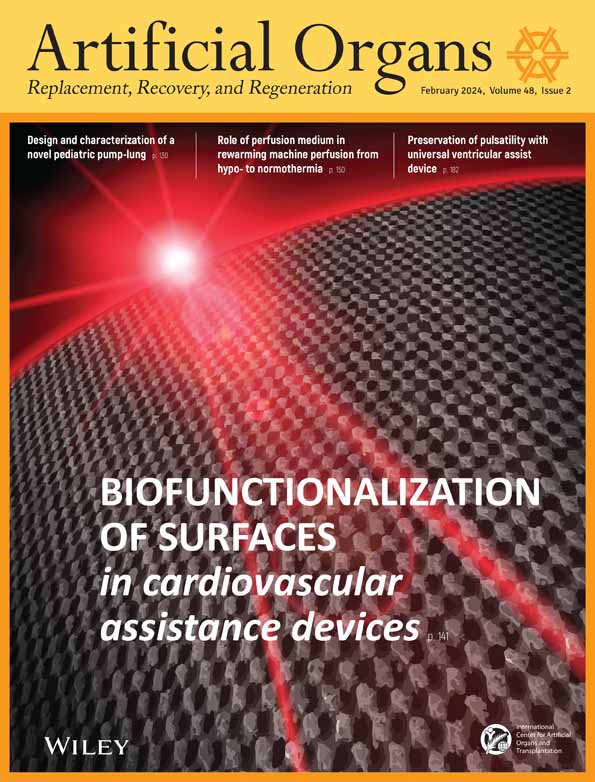Biofunctionalization of surfaces to minimize undesirable effects in cardiovascular assistance devices
Abstract
Background
The reactivity of blood with non-endothelial surface is a challenge for long-term Ventricular Assist Devices development, usually made with pure titanium, which despite of being inert, low density and high mechanical resistance it does not avoid the thrombogenic responses. Here we tested a modification on the titanium surface with Laser Induced Periodic Surface Structures followed by Diamond Like Carbon (DLC) coating in different thicknesses to customize the wettability profile by changing the surface energy of the titanium.
Methods
Four different surfaces were proposed: (1) Pure Titanium as Reference Material (RM), (2) Textured as Test Sample (TS), (3) Textured with DLC 0.3μm as (TSA) and (4) Textured with 2.4μm DLC as (TSB). A single implant was positioned in the abdominal aorta of Wistar rats and the effects of hemodynamic interaction were evaluated without anticoagulant drugs.
Results
After twelve weeks, the implants were extracted and subjected to qualitative analysis by Scanning Electron Microscopy under low vacuum and X-ray Energy Dispersion. The regions that remained in contact with the wall of the aorta showed encapsulation of the endothelial tissue. TSB implants, although superhydrophilic, have proven that the DLC coating inhibits the adhesion of biological material, prevents abrasive wear and delamination, as observed in the TS and TSA implants. Pseudo- neointimal layers were heterogeneously identified in higher concentration on Test Surfaces.
CONFLICT OF INTEREST STATEMENT
The authors declare no conflicts of interest.




